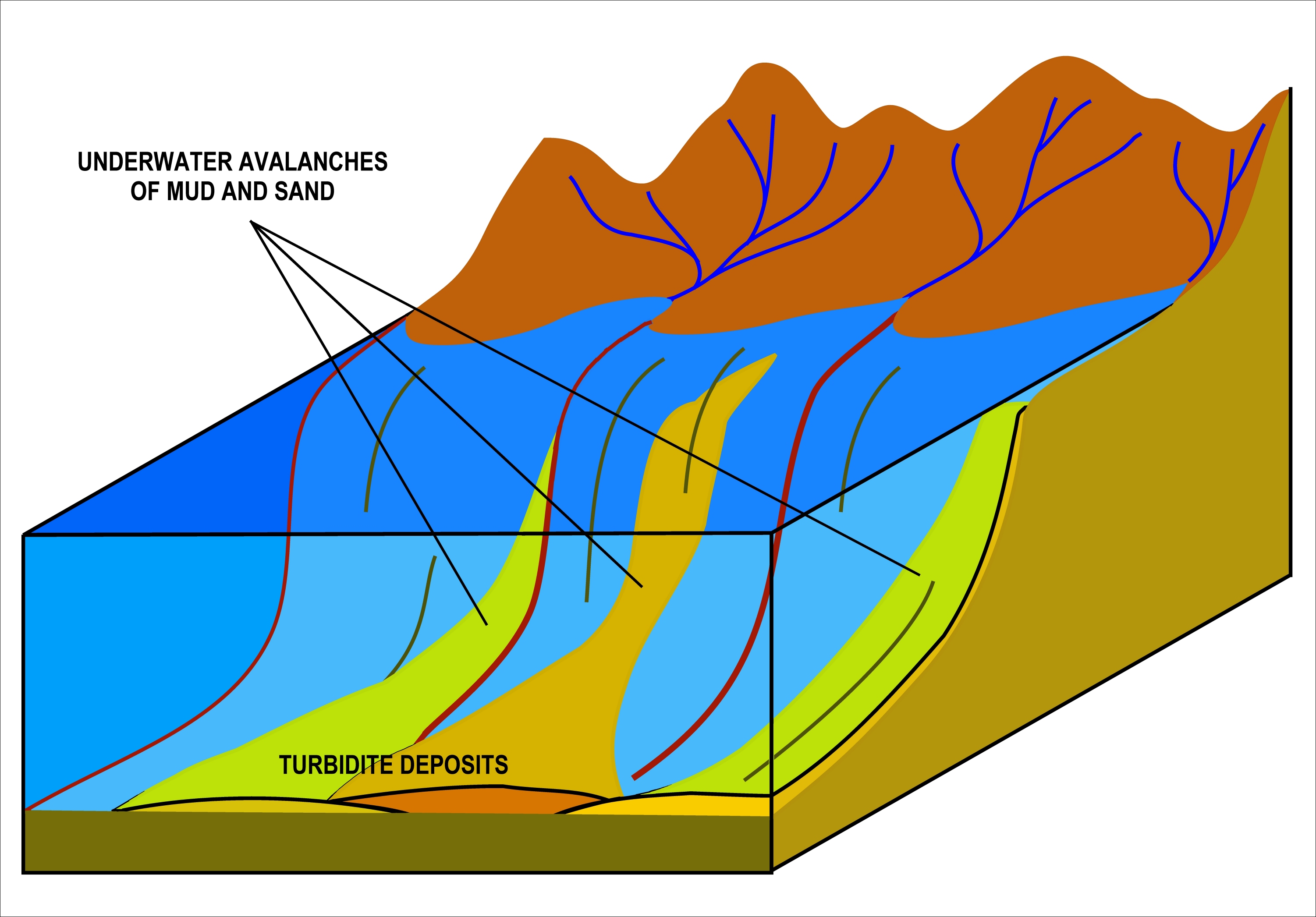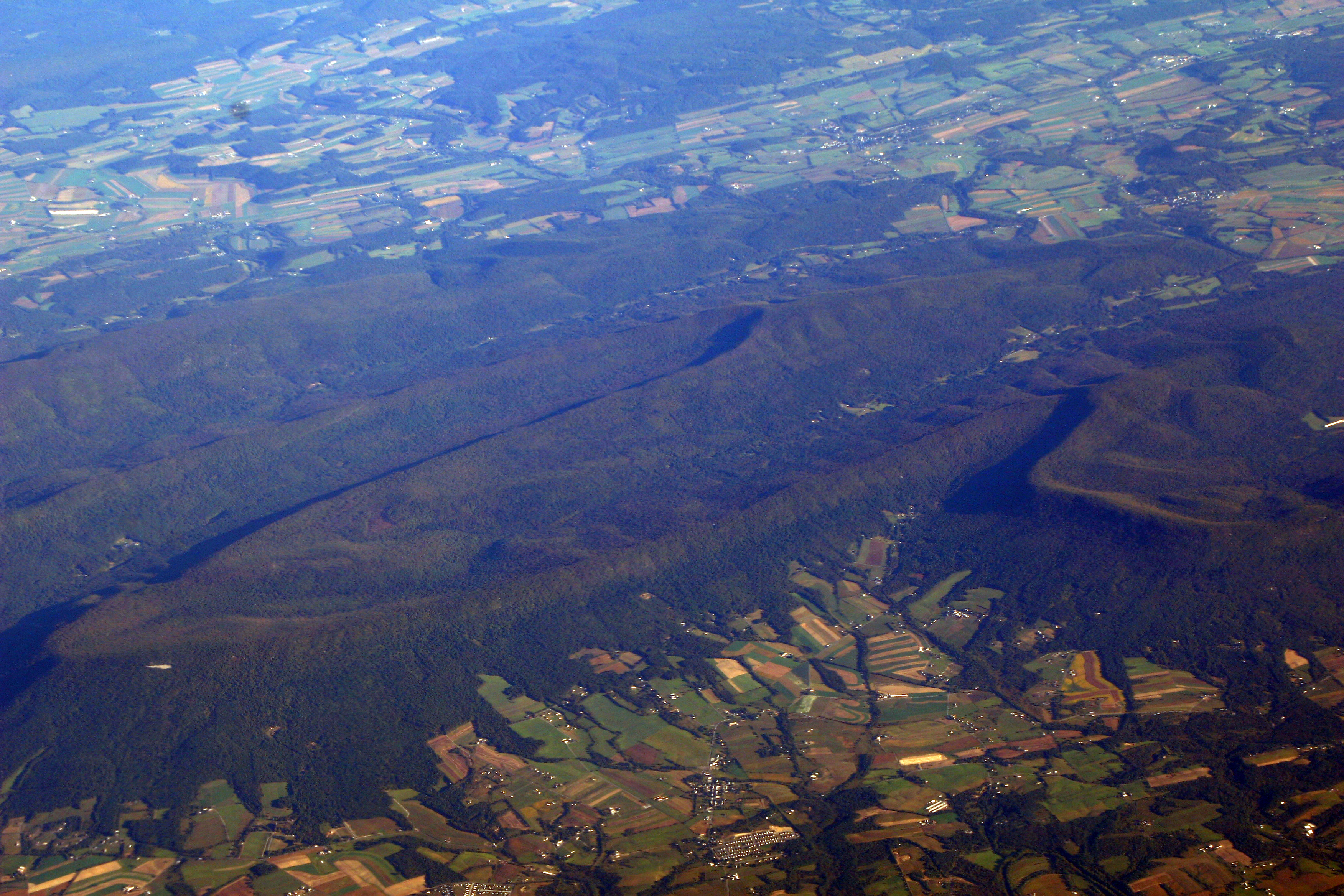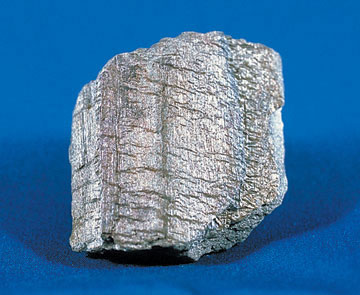|
Martinsburg Formation
The Ordovician Martinsburg Formation (Om) is a mapped bedrock unit in Pennsylvania, New Jersey, Maryland, Virginia, and West Virginia. It is named for the town of Martinsburg, West Virginia for which it was first described. It is the dominant rock formation of the Great Appalachian Valley in New Jersey (where it is called Kittatinny Valley and Pennsylvania (in the Lehigh Valley and Lebanon Valley). Description The Martinsburg is defined as a gray to dark gray, and infrequently tan and purple shale and slate. Local members of impure sandstone; thin, argillaceous limestone or phyllitic shale are present in the Cumberland Valley and the Lehigh Valley.Berg, T.M., Edmunds, W.E., Geyer, A.R. and others, compilers, (1980). Geologic Map of Pennsylvania: Pennsylvania Geologic Survey, Map 1, scale 1:250,000. The Martinsburg has three defined members in the Lehigh Valley: The Bushkill Member which is the basal slate unit. The Ramseyburg Member which is composed of alternating turbidite san ... [...More Info...] [...Related Items...] OR: [Wikipedia] [Google] [Baidu] |
Pennsylvania Turnpike
The Pennsylvania Turnpike (Penna Turnpike or PA Turnpike) is a toll highway operated by the Pennsylvania Turnpike Commission (PTC) in the U.S. state of Pennsylvania. A controlled-access highway, it runs for across the state. The turnpike's western terminus is at the Ohio state line in Lawrence County, where the road continues west as the Ohio Turnpike. The eastern terminus is at the New Jersey state line at the Delaware River–Turnpike Toll Bridge over the Delaware River in Bucks County, where the road continues east as the Pearl Harbor Memorial Extension of the New Jersey Turnpike. The highway runs east–west through the southern part of the state, connecting the Pittsburgh, Harrisburg, and Philadelphia areas. It crosses the Appalachian Mountains in central Pennsylvania, passing through four tunnels. The turnpike is part of the Interstate Highway System; it is designated as part of Interstate 76 (I-76) between the Ohio state line and Valley Forge, I-70 ... [...More Info...] [...Related Items...] OR: [Wikipedia] [Google] [Baidu] |
Lebanon Valley
The Lebanon Valley is a geographic region that lies between South Mountain and the Ridge and Valley Province of eastern Pennsylvania. The valley lies almost entirely within Lebanon and Berks counties in Pennsylvania. Portions of the valley lie in eastern Dauphin and northern Lancaster counties in Pennsylvania. It is bound to its southwest by the Susquehanna River and to its northeast by the adjoining Lehigh Valley. The Lebanon Valley is part of the much longer Great Appalachian Valley, also called the Great Valley, a natural lowland route running northeast–southwest and lying just inland from the Blue Ridge Mountains and South Mountain. The Great Valley, including the Lebanon Valley, has historically been admired for its fertile agricultural land. Beyond the southwestern end of the Lebanon Valley, the Great Valley is known locally as the Cumberland Valley. To the northeast the Great Valley is known locally as the Lehigh Valley. Lebanon Valley College is named for the region. ... [...More Info...] [...Related Items...] OR: [Wikipedia] [Google] [Baidu] |
East Timor
East Timor (), also known as Timor-Leste (), officially the Democratic Republic of Timor-Leste, is an island country in Southeast Asia. It comprises the eastern half of the island of Timor, the exclave of Oecusse on the island's north-western half, and the minor islands of Atauro and Jaco. Australia is the country's southern neighbour, separated by the Timor Sea. The country's size is . Dili is its capital and largest city. East Timor came under Portuguese influence in the sixteenth century, remaining a Portuguese colony until 1975. Internal conflict preceded a unilateral declaration of independence and an Indonesian invasion and annexation. Resistance continued throughout Indonesian rule, and in 1999 a United Nations–sponsored act of self-determination led to Indonesia relinquishing control of the territory. On 20 May 2002, as ''Timor-Leste'', it became the first new sovereign state of the 21st century. The national government runs on a semi-presidential syste ... [...More Info...] [...Related Items...] OR: [Wikipedia] [Google] [Baidu] |
Australia
Australia, officially the Commonwealth of Australia, is a sovereign ''Sovereign'' is a title which can be applied to the highest leader in various categories. The word is borrowed from Old French , which is ultimately derived from the Latin , meaning 'above'. The roles of a sovereign vary from monarch, ruler or ... country comprising the mainland of the Australian continent, the island of Tasmania, and numerous smaller islands. With an area of , Australia is the largest country by area in Oceania and the world's sixth-largest country. Australia is the oldest, flattest, and driest inhabited continent, with the least fertile soils. It is a megadiverse country, and its size gives it a wide variety of landscapes and climates, with deserts in the centre, tropical Forests of Australia, rainforests in the north-east, and List of mountains in Australia, mountain ranges in the south-east. The ancestors of Aboriginal Australians began arriving from south east Asia approx ... [...More Info...] [...Related Items...] OR: [Wikipedia] [Google] [Baidu] |
Turbidites
A turbidite is the geologic deposit of a turbidity current, which is a type of amalgamation of fluidal and sediment gravity flow responsible for distributing vast amounts of clastic sediment into the deep ocean. Sequencing Turbidites were first properly described by Arnold H. Bouma (1962), who studied deepwater sediments and recognized particular "fining-up intervals" within deep water, fine-grained shales, which were anomalous because they started at pebble conglomerates and terminated in shales. This was anomalous because within the deep ocean it had historically been assumed that there was no mechanism by which tractional flow could carry and deposit coarse-grained sediments into the abyssal depths. Bouma cycles begin with an erosional contact of a coarse lower bed of pebble to granule conglomerate in a sandy matrix, and grade up through coarse then medium plane parallel sandstone; through cross-bedded sandstone; rippled cross-bedded sand/silty sand, and finally lamina ... [...More Info...] [...Related Items...] OR: [Wikipedia] [Google] [Baidu] |
Iapetus Ocean
The Iapetus Ocean (; ) was an ocean that existed in the late Neoproterozoic and early Paleozoic eras of the geologic timescale (between 600 and 400 million years ago). The Iapetus Ocean was situated in the southern hemisphere, between the paleocontinents of Laurentia, Baltica and Avalonia. The ocean disappeared with the Acadian, Caledonian and Taconic orogenies, when these three continents joined to form one big landmass called Euramerica. The "southern" Iapetus Ocean has been proposed to have closed with the Famatinian and Taconic orogenies, meaning a collision between Western Gondwana and Laurentia. Because the Iapetus Ocean was positioned between continental masses that would at a much later time roughly form the opposite shores of the Atlantic Ocean, it can be seen as a sort of precursor of the Atlantic, and the process by which it opened shares many similarities with that of the Atlantic's initial opening in the Jurassic. The Iapetus Ocean was therefore named for the t ... [...More Info...] [...Related Items...] OR: [Wikipedia] [Google] [Baidu] |
Flysch
Flysch () is a sequence of sedimentary rock layers that progress from deep-water and turbidity flow deposits to shallow-water shales and sandstones. It is deposited when a deep basin forms rapidly on the continental side of a mountain building episode. Examples are found near the North American Cordillera, the Alps, the Pyrenees and the Carpathians. Sedimentological properties Flysch consists of repeated sedimentary cycles with upwards fining of the sediments. There are sometimes coarse conglomerates or breccias at the bottom of each cycle, which gradually evolve upwards into sandstone and shale/mudstone. Flysch typically consists of a sequence of shales rhythmically interbedded with thin, hard, graywacke-like sandstones. Typically the shales do not contain many fossils, while the coarser sandstones often have fractions of micas and glauconite. Tectonics In a continental collision, a subducting tectonic plate pushes on the plate above it, making the rock fold, often to t ... [...More Info...] [...Related Items...] OR: [Wikipedia] [Google] [Baidu] |
Forearc
Forearc is a plate tectonic term referring to a region between an oceanic trench, also known as a subduction zone, and the associated volcanic arc. Forearc regions are present along a convergent margins and eponymously form 'in front of' the volcanic arcs that are characteristic of convergent plate margins. A back-arc region is the companion region behind the volcanic arc. Many forearcs have an accretionary wedge which may form a topographic ridge known as an outer arc ridge that parallels the volcanic arc. Between the accretionary wedge and the volcanic arc a forearc basin, sometimes referred to as an outer arc trough, may be present and can accumulate thick deposits of sediment. Due to tectonic stresses as one tectonic plate rides over another, forearc regions are sources for great thrust earthquakes. Formation During subduction, an oceanic plate is thrust below another tectonic plate, which may be oceanic or continental. Water and other volatiles in the down-going pl ... [...More Info...] [...Related Items...] OR: [Wikipedia] [Google] [Baidu] |
Sedimentary Depositional Environment
In geology, depositional environment or sedimentary environment describes the combination of physical, chemical, and biological processes associated with the deposition of a particular type of sediment and, therefore, the rock types that will be formed after lithification, if the sediment is preserved in the rock record. In most cases, the environments associated with particular rock types or associations of rock types can be matched to existing analogues. However, the further back in geological time sediments were deposited, the more likely that direct modern analogues are not available (e.g. banded iron formations). Types of depositional environments Continental * – type of Fluvial deposit. Caused by moving water in a fan shape (Alluvial Fan) and containing mostly impermeable and nonporous sediments well sorted. * . Often in deserts and coastal regions and well sorted, large scale cross-beds * – processes due to moving water, mainly streams. Common sediments are gra ... [...More Info...] [...Related Items...] OR: [Wikipedia] [Google] [Baidu] |
Cumberland Valley
The Cumberland Valley is a northern constituent valley of the Great Appalachian Valley, within the Atlantic Seaboard watershed in Pennsylvania and Maryland. The Appalachian Trail crosses through the valley. Geography The valley is bound to the west and north by the Ridge-and-Valley Appalachians (Bear Pond Mountains/ Blue Mountain), to the east and south by South Mountain, to the northeast by the Susquehanna River at Harrisburg, and to the south by the Potomac River. The portion of the valley residing in Maryland is sometimes referred to as the Hagerstown Valley. The Cumberland Valley Railroad, the Cumberland Valley AVA wine region, and the Cumberland Valley School District are named for the region. Settlements Cities in the Cumberland Valley include Harrisburg, Pennsylvania, [...More Info...] [...Related Items...] OR: [Wikipedia] [Google] [Baidu] |
Phyllite
Phyllite ( ) is a type of foliated metamorphic rock created from slate that is further metamorphosed so that very fine grained white mica achieves a preferred orientation.Stephen Marshak ''Essentials of Geology'', 3rd ed. It is primarily composed of quartz, sericite mica, and chlorite. Phyllite has fine-grained mica flakes, whereas slate has extremely fine mica flakes, and schist has large mica flakes, all mica flakes of which have achieved a preferred orientation. Among foliated metamorphic rocks, it represents a gradation in the degree of metamorphism between slate and schist. The minute crystals of graphite, sericite, or chlorite, or the translucent fine-grained white mica, impart a silky, sometimes golden sheen to the surfaces of cleavage, called "phyllitic luster". The word comes from the Greek ''phyllon'', meaning "leaf". The protolith (or parent rock) for phyllite is shale or pelite, or slate, which in turn came from a shale protolith. Its constituent platy mine ... [...More Info...] [...Related Items...] OR: [Wikipedia] [Google] [Baidu] |
Limestone
Limestone ( calcium carbonate ) is a type of carbonate sedimentary rock which is the main source of the material lime. It is composed mostly of the minerals calcite and aragonite, which are different crystal forms of . Limestone forms when these minerals precipitate out of water containing dissolved calcium. This can take place through both biological and nonbiological processes, though biological processes, such as the accumulation of corals and shells in the sea, have likely been more important for the last 540 million years. Limestone often contains fossils which provide scientists with information on ancient environments and on the evolution of life. About 20% to 25% of sedimentary rock is carbonate rock, and most of this is limestone. The remaining carbonate rock is mostly dolomite, a closely related rock, which contains a high percentage of the mineral dolomite, . ''Magnesian limestone'' is an obsolete and poorly-defined term used variously for dolomite, for lime ... [...More Info...] [...Related Items...] OR: [Wikipedia] [Google] [Baidu] |








